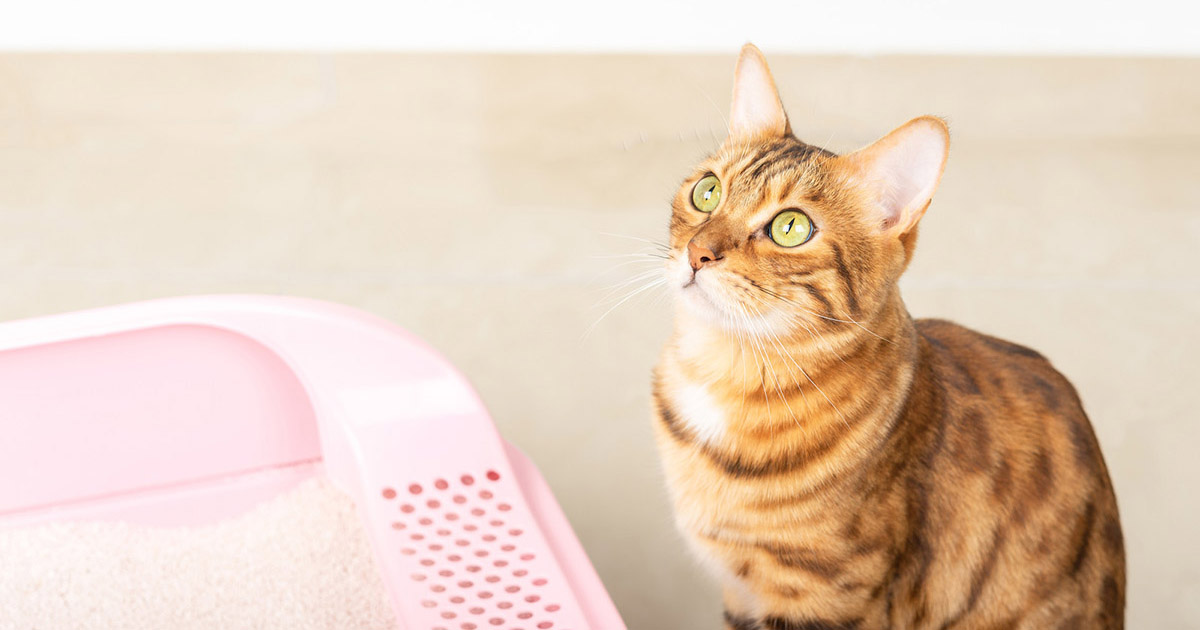The Dangers of Flushing Cat Poop Down Your Toilet - Tips for Safer Handling
The Dangers of Flushing Cat Poop Down Your Toilet - Tips for Safer Handling
Blog Article
This post following next on the subject of How to Dispose of Cat Poop and Litter Without Plastic Bags is relatively captivating. Don't bypass it.

Introduction
As feline proprietors, it's important to bear in mind exactly how we get rid of our feline close friends' waste. While it might appear hassle-free to purge cat poop down the bathroom, this method can have destructive repercussions for both the setting and human health.
Environmental Impact
Flushing feline poop presents dangerous microorganisms and parasites into the water supply, presenting a significant risk to water environments. These pollutants can negatively impact marine life and concession water quality.
Health and wellness Risks
In addition to environmental worries, flushing feline waste can additionally posture health and wellness threats to people. Feline feces may include Toxoplasma gondii, a parasite that can trigger toxoplasmosis-- a possibly severe disease, especially for expectant women and individuals with weakened body immune systems.
Alternatives to Flushing
Thankfully, there are more secure and extra accountable means to get rid of feline poop. Think about the complying with choices:
1. Scoop and Dispose in Trash
The most typical method of throwing away pet cat poop is to scoop it right into a naturally degradable bag and toss it in the trash. Make certain to make use of a devoted clutter scoop and get rid of the waste without delay.
2. Usage Biodegradable Litter
Choose biodegradable feline litter made from materials such as corn or wheat. These clutters are environmentally friendly and can be securely thrown away in the trash.
3. Hide in the Yard
If you have a backyard, think about hiding feline waste in an assigned area away from veggie gardens and water resources. Be sure to dig deep sufficient to prevent contamination of groundwater.
4. Install a Pet Waste Disposal System
Invest in an animal waste disposal system particularly created for feline waste. These systems use enzymes to break down the waste, decreasing smell and ecological impact.
Conclusion
Liable animal ownership expands beyond providing food and sanctuary-- it additionally includes proper waste administration. By avoiding purging pet cat poop down the toilet and going with alternative disposal methods, we can reduce our environmental footprint and safeguard human health.
Why Can’t I Flush Cat Poop?
It Spreads a Parasite
Cats are frequently infected with a parasite called toxoplasma gondii. The parasite causes an infection called toxoplasmosis. It is usually harmless to cats. The parasite only uses cat poop as a host for its eggs. Otherwise, the cat’s immune system usually keeps the infection at low enough levels to maintain its own health. But it does not stop the develop of eggs. These eggs are tiny and surprisingly tough. They may survive for a year before they begin to grow. But that’s the problem.
Our wastewater system is not designed to deal with toxoplasmosis eggs. Instead, most eggs will flush from your toilet into sewers and wastewater management plants. After the sewage is treated for many other harmful things in it, it is typically released into local rivers, lakes, or oceans. Here, the toxoplasmosis eggs can find new hosts, including starfish, crabs, otters, and many other wildlife. For many, this is a significant risk to their health. Toxoplasmosis can also end up infecting water sources that are important for agriculture, which means our deer, pigs, and sheep can get infected too.
Is There Risk to Humans?
There can be a risk to human life from flushing cat poop down the toilet. If you do so, the parasites from your cat’s poop can end up in shellfish, game animals, or livestock. If this meat is then served raw or undercooked, the people who eat it can get sick.
In fact, according to the CDC, 40 million people in the United States are infected with toxoplasma gondii. They get it from exposure to infected seafood, or from some kind of cat poop contamination, like drinking from a stream that is contaminated or touching anything that has come into contact with cat poop. That includes just cleaning a cat litter box.
Most people who get infected with these parasites will not develop any symptoms. However, for pregnant women or for those with compromised immune systems, the parasite can cause severe health problems.
How to Handle Cat Poop
The best way to handle cat poop is actually to clean the box more often. The eggs that the parasite sheds will not become active until one to five days after the cat poops. That means that if you clean daily, you’re much less likely to come into direct contact with infectious eggs.
That said, always dispose of cat poop in the garbage and not down the toilet. Wash your hands before and after you clean the litter box, and bring the bag of poop right outside to your garbage bins.
https://trenchlesssolutionsusa.com/why-cant-i-flush-cat-poop/

Do you enjoy reading up on Can You Flush Cat Poop Down The Toilet?? Write feedback down the page. We will be pleased to see your suggestions about this blog. Hoping that you visit us again later on. Do you know another individual who is sincerely interested in the topic? Feel free to promote it. Thank you so much for going through it.
Call Today Report this page